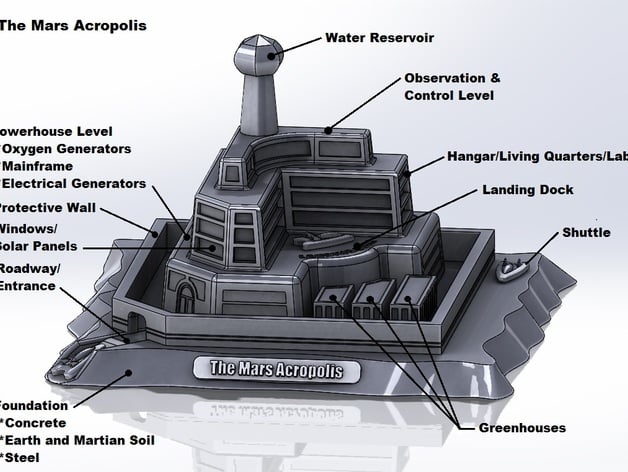Week 9: Art + Space
Space has captivated the minds and cultures of humans for seemingly as long as humans have been on this planet. Alongside that captivation, art has been a field that has supported and aided the conceptualization and exploration of space. Even centuries ago, as Victoria Vesna pointed out in her lecture, civilizations such as the Romans used art and culture to explain space. For example, in the case of the Romans, each planet within our solar system was named after a god or goddess. Beyond the naming of the planets, however, Romans utilized art to diagram and map the night sky. Perhaps one of the most famous examples of this can be seen in Ptolemy’s map of the solar system. This map was one of the first maps of each planet's orbit that predicted each planet's location based upon date and time.
Centuries after the work of Roman astronomers and the many that followed them, modern astronomers and scientists still utilize art to aid themselves with space exploration and study. NASA, famous for its engineers and astronauts, even has its own art department. One of the main purposes of this department is to create conceptual art and animations that convey the complexities of space in a simpler way that can be understood by the public. A great and fascinating project recently completed by this department is the creation of visuals that show off the planned Space Launch System (SLS), which will be a super powerful launch vehicle that gives the potential to explore deep into space beyond Earth’s orbit.
Another great utilization of art that is driving space exploration and study is the creation of models for a mars colony. Humans have long talked about the dream of colonizing other planets, but with many plans being set forth by NASA and SpaceX to send humans to mars that dream is becoming a reality. Many artists actually have a key role in turning that dream into a reality by helping to design a functional home for the next human Martians. In fact, there even recently was a design competition for artists to create models for the Mars colony hosted by NASA to crowdsource creative ideas for the real-life plans for the colony. The contestants had to create models for the colony that followed specific guidelines such as the requirement of the colonies to be utilitarian, capable of withstanding the elements and providing all the amenities of a home.
The study of space and its exploration is often thought of as a field for strictly engineers and scientists, yet artists have been just as fundamental to astronomy and space exploration as well. Art has been key to visualizing spaceships, planetary systems, and countless other concepts relating to space, and will continue to be instrumental to studying space as humans push space exploration to greater and greater heights.
References:
"Ancient Greek and Roman Astronomy." University of Central Florida. Web. <https://pressbooks.online.ucf.edu/astronomybc/chapter/2-2-ancient-astronomy/>
"How on Earth are NASA Science and Art Related?" NASA, 28 Aug. 2019. Web. <https://www.kennedyspacecenter.com/blog/how-on-earth-are-nasa-science-and-art-related>
Mohon, Lee. "Space Launch System (SLS) Overview." NASA, 16 Sep. 2020. Web. <https://www.nasa.gov/exploration/systems/sls/overview.html>
"Ptolemy." University of Oregon. Web. <http://abyss.uoregon.edu/~js/glossary/ptolemy.html>
Rutger. "Master of the Stars: The Romans." Under Lucky Stars, 27 Dec. 2017. Web. <https://www.underluckystars.com/blog/master-of-the-stars-the-romans/>
"The Mars Acropolis." Thingiverse, 09 Jun. 2015. Web. <https://www.thingiverse.com/thing:357970>
Vesna, Victoria. "8 Space pt1." Youtube, 29 Jul. 2013. Web. <https://www.youtube.com/watch?v=6ZIqTR332l8>
Williams, Matthew S. "What Would a Martian Colony Look Like?" Interesting Engineering, 23 Jun. 2019. Web. <https://interestingengineering.com/what-would-a-martian-colony-look-like>



Hi Jonathan! I completely agree with your argument that art is extremely instrumental for both space examination and exploration — not only do scientists utilize art to create models that are easily understood and digested, but additionally, throughout time artists been able to express the overall wonder and mystery of the universe which in itself motivates viewers to want the investigation and voyage of the cosmos. On that note, although I understood the importance of art for space investigation, I still found it really interesting to learn that NASA has its own art department. I had always thought that the conceptual art developed for the newfound understandings of the universe were created by an outside source and I had never even considered that NASA itself invested in the creation of art pieces. After learning this, however, it makes complete sense as the best way to convey the unknown and overall complexity of space to the common person must in fact be through art itself. Beyond motivation, I now see how art can also serve as a direct source of development for space exploration due to your example of the Mars colony model, which I also found to be quite interesting.
ReplyDelete